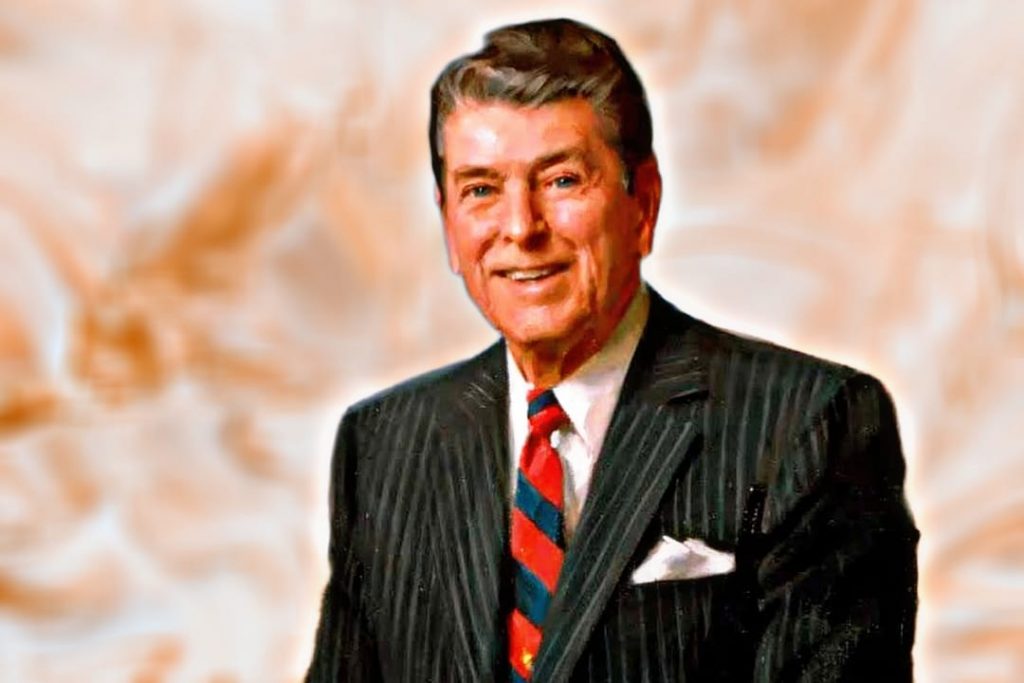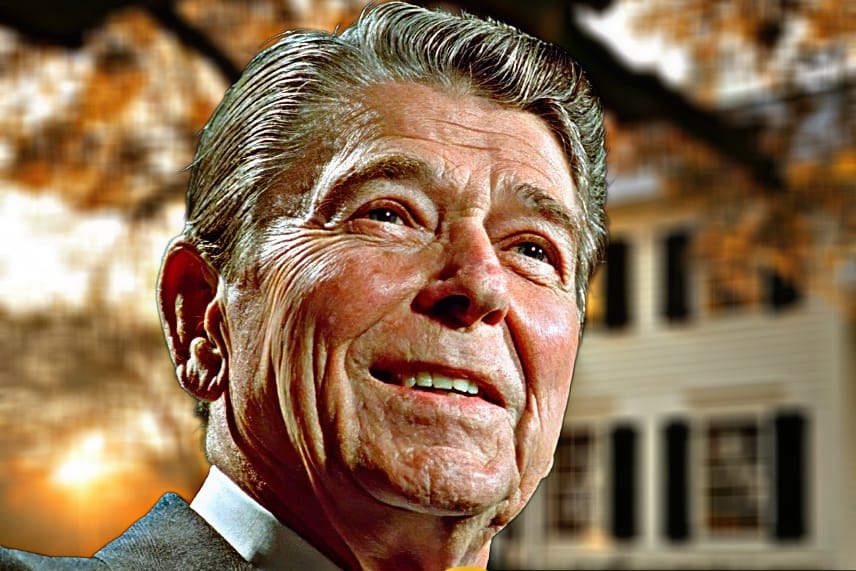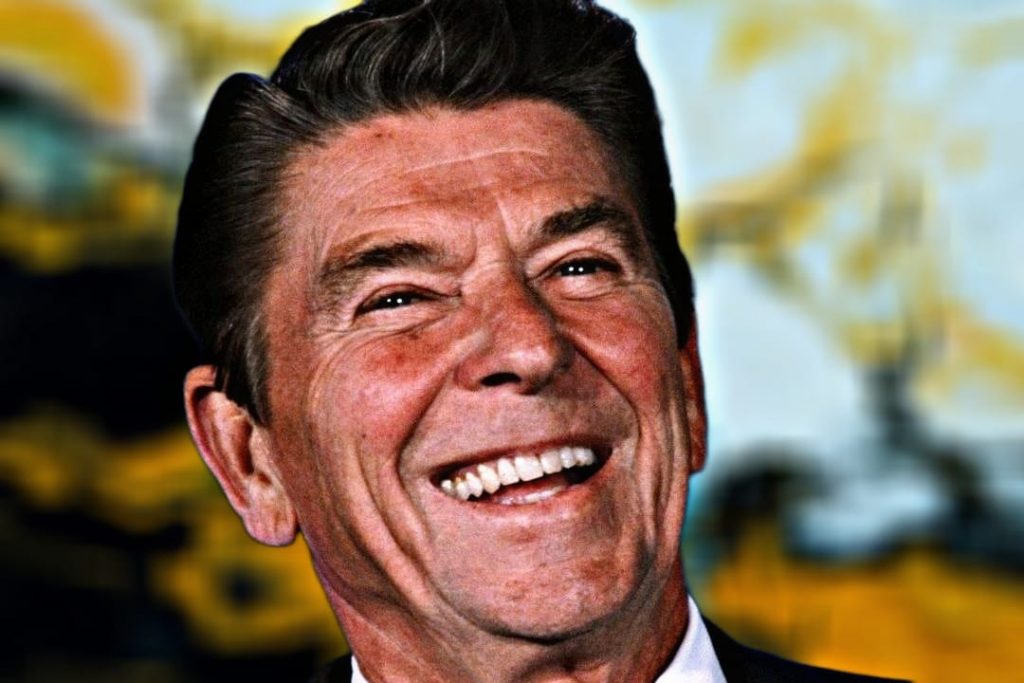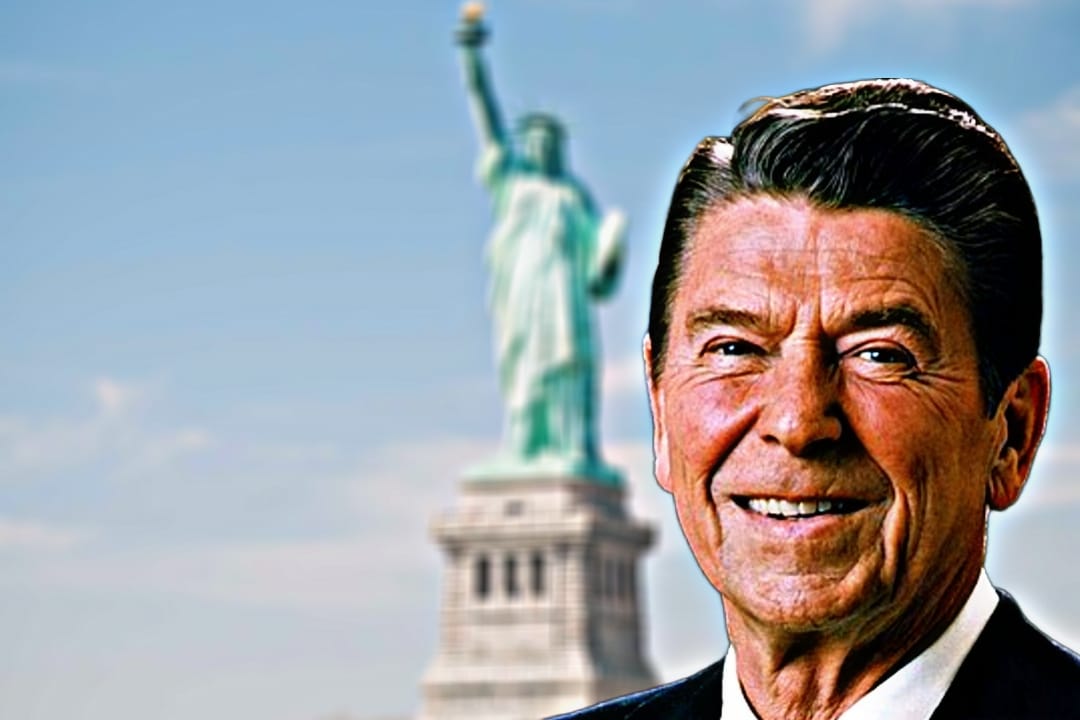Ronald Reagan, the 40th president of the United States, remains one of the most iconic and influential figures in modern American history. Known for his charismatic leadership, unwavering optimism, and ability to unite Americans across political divides, Ronald Reagan reshaped the nation’s political landscape and played a pivotal role in the conclusion of the Cold War. His presidency, spanning from 1981 to 1989, was marked by bold economic reforms, a resolute stance against the Soviet Union, and an enduring cultural legacy that resonates in American politics to this day.
This article delves into the life, presidency, policies, and enduring influence of Ronald Reagan, offering insight into the man behind the policies and exploring his significant impact on both domestic and international affairs.
Early Life and Career: From Hollywood to Politics

Born on February 6, 1911, in Tampico, Illinois, Ronald Wilson Reagan was raised in a working-class family. His father, John Reagan, struggled with alcoholism, and his mother, Nelle, was a strong influence on him. Reagan’s early life was marked by financial difficulties, but his mother’s encouragement helped foster a love for storytelling, public speaking, and community service. Ronald Reagan often spoke fondly of his humble beginnings and the values instilled in him by his family.
After attending Eureka College in Illinois, where he majored in economics and sociology, Ronald Reagan worked as a radio announcer and later pursued a career in Hollywood. His charming demeanor and strong screen presence helped him land roles in over 50 films, including notable titles like Kings Row (1942), where he portrayed a role that would become emblematic of his political philosophy. Throughout his time in Hollywood, Reagan built a reputation as a likeable, reliable actor, and in 1947, he became involved in the Screen Actors Guild (SAG), eventually serving as its president.
During the late 1940s and 1950s, Ronald Reagan political views began to shift. Initially a Democrat, he became increasingly disillusioned with the party’s stance on communism and socialism. By the mid-1950s, Reagan had fully embraced conservative values, joining the Republican Party in 1962. His shift in political ideology was further solidified by his opposition to the expansion of the federal government and his growing concerns about the influence of left-wing politics in Hollywood.
The Road to the Presidency: Ronald Reagan Political Ascent

Ronald Reagan’s political journey was characterized by his unwavering commitment to conservative principles. His political debut came in 1966, when he successfully ran for governor of California. Ronald Reagan platform focused on reducing government interference, promoting individual freedoms, and maintaining a strong anti-communist stance, themes that would become central to his presidency.
Ronald Reagan two terms as governor of California (1967-1975) were marked by his strong leadership in the face of social unrest and fiscal challenges. He took a hard stance against student protests, including the famous 1969 protest at the University of California, Berkeley, over the Vietnam War. Ronald Reagan tough-on-crime rhetoric and support for limited government interventions won him both admiration and criticism, setting the stage for his eventual national rise.
By the early 1970s, Ronald Reagan had become a national figure in the conservative movement. His 1964 speech, “A Time for Choosing,” delivered in support of Republican presidential candidate Barry Goldwater, gained widespread attention for its passionate defense of free-market capitalism and individual liberty. This speech, often considered a turning point in Ronald Reagan political career, helped solidify his position as a leading voice in American conservatism.
In 1976, Ronald Reagan challenged incumbent President Gerald Ford for the Republican nomination, though he was ultimately defeated. However, this setback only fueled his determination, and in 1980, Reagan made a successful bid for the presidency. Running on a platform of tax cuts, a stronger military, and a rollback of government regulations, Reagan won the Republican nomination and triumphed in the general election against incumbent Jimmy Carter.
Presidency: Key Achievements and Policies
Ronald Reagan’s presidency was a defining era in American history. His leadership reshaped the political, economic, and cultural fabric of the nation. Here are some of the key policies and achievements during his eight years in office.

1. Economic Policies: The Reagan Revolution
One of the most significant aspects of Ronald Reagan presidency was his economic policy, commonly referred to as “Reaganomics.” Reagan believed in the power of free markets and aimed to reduce the role of the government in the economy. His economic vision included four main pillars:
- Tax Cuts: Ronald Reagan Economic Recovery Tax Act of 1981 was one of his hallmark achievements. The legislation significantly reduced federal income tax rates, with the top tax rate dropping from 70% to 50%. In 1986, Ronald Reagan pushed through the Tax Reform Act, which lowered taxes even further and simplified the tax code.
- Deregulation: Ronald Reagan sought to reduce government intervention in various industries, particularly in areas such as transportation, banking, and energy. He believed that less regulation would stimulate business growth, increase competition, and ultimately benefit consumers.
- Control of Inflation: Ronald Reagan administration worked closely with the Federal Reserve to tackle inflation, which had plagued the U.S. economy in the late 1970s. Under the leadership of Paul Volcker, the Federal Reserve implemented tight monetary policies that eventually brought inflation down to more manageable levels.
- Military Spending: Ronald Reagan believed that a strong military was essential for American prosperity and security. He significantly increased defense spending, which played a role in ending the Cold War and ensuring American military superiority.
Critics of Reaganomics argue that it disproportionately benefited the wealthy and increased income inequality. However, supporters contend that Ronald Reagan policies led to a period of robust economic growth, lower unemployment, and a reduction in inflation. The economic boom of the 1980s is often viewed as a direct result of his economic policies.
2. The Cold War: Ronald Reagan Stance Against the Soviet Union
Ronald Reagan foreign policy was largely defined by his aggressive stance against the Soviet Union and his commitment to defeating communism worldwide. Reagan believed that the Soviet Union represented a global threat to democracy and sought to undermine it through both diplomatic pressure and military strength.
One of Ronald Reagan most famous declarations came in 1983 when he referred to the Soviet Union as the “evil empire.” This rhetoric marked a sharp contrast to the more cautious approach taken by previous presidents, particularly the policy of détente that had characterized much of the Cold War era.
Ronald Reagan administration pursued a strategy of “peace through strength,” focusing on military buildup, including the development of new nuclear weapons, and initiatives like the Strategic Defense Initiative (SDI), often referred to as “Star Wars.” While SDI was never fully implemented, it sent a clear message to the Soviet Union about American commitment to defense and technological innovation.
In addition to his military posture, Ronald Reagan also worked to foster dialogue with Soviet leadership. In 1985, he met with Soviet Premier Mikhail Gorbachev for the first time at the Geneva Summit, where both leaders discussed the possibility of reducing nuclear weapons. Their subsequent meetings, including the Reykjavik Summit in 1986, paved the way for significant arms reduction agreements, culminating in the 1987 Intermediate-Range Nuclear Forces (INF) Treaty.
Ronald Reagan policies, in combination with Gorbachev’s reforms in the Soviet Union, played a key role in bringing the Cold War to a close. By the end of Reagan’s presidency, the Soviet Union was on the brink of collapse, and the threat of nuclear war had diminished.
3. The Iran-Contra Affair
While Ronald Reagan presidency was largely defined by his success in foreign policy and economic growth, it was also marred by the Iran-Contra Affair. This political scandal involved the secret sale of arms to Iran, which was embroiled in the Iran-Iraq War and considered a state sponsor of terrorism, in exchange for funds that were then used to support Contra rebels in Nicaragua, despite Congress having prohibited such support.
The scandal came to light in 1986, and although Ronald Reagan denied any direct involvement, the controversy led to investigations and the eventual conviction of several key figures in his administration. Reagan’s reputation was temporarily tarnished, but he managed to maintain widespread public support and finished his presidency on a high note.
4. Social Policies and Domestic Issues
On domestic issues, Ronald Reagan policies reflected his conservative values. He advocated for a reduction in the size and scope of the federal government, often framing his arguments around the belief that government intervention stifled individual freedom and economic prosperity. Reagan worked to reduce social welfare programs, emphasizing self-reliance over government assistance.
Ronald Reagan administration also saw significant judicial appointments. He appointed three justices to the U.S. Supreme Court—Sandra Day O’Connor, the first woman to serve on the Court; Antonin Scalia, a staunch conservative; and Anthony Kennedy, who would become a key swing vote. These appointments solidified a conservative majority on the Court for decades.
In the realm of civil rights, Ronald Reagan administration was criticized for its limited focus on racial issues. His opposition to affirmative action and civil rights legislation alienated many African American voters and civil rights activists.
Legacy of Ronald Reagan
Ronald Reagan’s impact on the United States extends far beyond his presidency. His vision for a smaller government, a strong military, and a free-market economy influenced generations of American politicians, particularly within the Republican Party. His ability to communicate his ideas with clarity and optimism helped restore confidence in the American people during a time of national malaise and economic uncertainty.
Ronald Reagan leadership was pivotal in ending the Cold War and shaping the post-Cold War world order. His legacy is also intertwined with the transformation of the American economy and the rise of conservative values in the late 20th century.
In the decades following his presidency, Ronald Reagan influence has continued to shape American politics. He remains a symbol of conservative values, and his presidency is often invoked by Republican politicians seeking to draw on his legacy. Reagan’s ability to connect with ordinary Americans and inspire them with his vision of a prosperous, free, and strong America has made him an enduring figure in the annals of American history.
Conclusion
Ronald Reagan’s life and presidency were characterized by profound change and monumental achievements. From his early days as an actor to his rise as a political leader, Ronald Reagan career was defined by his unwavering commitment to conservative principles, a belief in the power of the free market, and an unshakable optimism about the future of America. His presidency was transformative, leaving a lasting imprint on American domestic and foreign policy. Reagan’s legacy as a defender of freedom, a champion of economic growth, and a key figure in the end of the Cold War continues to resonate today.

